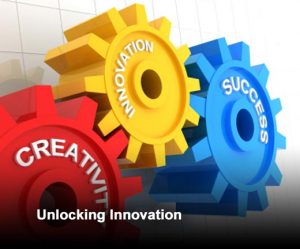
Innovation leads to the dynamics that governs the interaction between science, industry, and society. Innovation comes in two ways; 0ne is the technology-push and the other is customer-pull. Technology-push introduces new products based on progressive and cutting-edge research and the customer-pull represents customers’ increasing demand which engages marketers with their whims and fancies. Customers are becoming more wide-ranging, more educated, and more demanding. Firms are hectically bringing out streams of products and services. The frenzied business cycle is pushing firms with unimagined business strategies, marketing plans, sales strategies, supply chain strategies compelling pull and push in the value chain.
The liberalization policies in the most of developing countries have brought about sea change in their economies. This fact has also brought with it destabilization for the existing businesses in those countries; they are constantly fighting to retain their market shares and profits. Many companies are trying to fine-tune their spreads to the challenging business environment which exemplifies that the ‘fittest shall survive’.

Science, technology, and innovation have long provided the foundation for America’s prosperity. The naturally curious and imaginative Americans have developed new products and technologies that have fueled their economy and improved their quality of life. Consider how different our lives would be without electricity, air travel, antibiotics, computers, and the Internet. The commitment of the Americans to science, technology, and innovation has created an array of innovative products. Investment in science, technology, and research and development is the top priority for this country. It tops their national agenda.
Innovation and creativity are critical to the future of the nation

Innovation and creativity are critical to nation’s future for a variety of reasons. First, the development of new products, services, and processes drives economic growth and job creation. Innovation is important not only for high-tech sectors such as advanced manufacturing, aerospace, clean energy, the life sciences, semiconductors, and the Internet. It is also essential for companies that are using technology to develop products more rapidly, harness the “collective IQ” of their customers and employees, and coordinate sophisticated global supply chains. Innovation is not solely the territory of the venture capitalist, the entrepreneur, the scientist, and the molecular researcher, but of every citizen from a cobbler, a housewife, a school going kid to a retired senior citizen. Each individual has to use creativity for a better survival. The 21st century requires creativity and innovation in building infrastructure, the life sciences, biodiversity, and environmental maintenance everywhere.
Innovations increase productivity also; in the long run, it has a huge impact on a nation’s standard of living. It is a support competitive advantage of a nation. But, to bring in an innovative and creative culture an investment in research is imperative. When a nation increases number of research universities, harnesses entrepreneurial culture, flexible labor markets, and profound capital markets progression of it economy happens easily.

We are often confused with the concepts of creativity and innovation because they are connected with expressions such as intangible, unscientific, non-usable, undefined, mysterious, enigmatic etc. Well, these words are perhaps used to give a feeling that creativity and innovation are domain of a few people.
Innovation in healthcare plays a pivotal role; good healthcare can provide with longer, healthier lives hence a healthier and peaceful nation. The civic sector too requires a lot of creativity and innovation to bring about changes in the lives of people. It lifts people out of poverty, prevents crime, and builds vibrant communities. Innovation in the civic sector has the potential to help address some of our toughest and most persistent societal challenges. It helps advancing the frontiers of human knowledge and increasing our understanding of ourselves and the world around us.

The United States has held on its position in the five most-innovative nations of world, while United Kingdom moved up to the third spot and astonishingly Switzerland retained its place atop the rankings in the Global Innovation Index in 2013 which is published by Cornell University, INSEAD, and the World Intellectual Property Organization (WIPO). The report further states that despite the economic crisis, innovation is alive and well. Research and development spending levels are surpassing in most countries and successful local hubs are thriving. A group of dynamic middle- and low-income countries including China, Costa Rica, India, and Senegal are outpacing their peers, but haven’t broken into the top of the GII 2013 leader board.
What developing economies need to realize is that besides strong governance an unwavering vision and unstopping mission is a must for fostering innovation in a country. To me, capitalism is not bad or rude; it is an efficient method of allocating resources to where they give the highest return. The other attribute of it tends to concentrate economic resources to form monopolies. In other words the more efficient drive the less efficient out of business. In conclusion capitalism fosters innovation and resourcefulness.

India saw a spurt in the so called entrepreneurial miracles in the private sector since the year 2000. The news age and first generation entrepreneurs Harsh Mariwala of Merico, Sunil Mittal of Bharati Telecom, Laxmi Mittal, Azim Premji of Wipro, Nandan Nillenkani of Infosys, Ranganathan of Cavin Care, and Kishore Biyani of Future Group showcased the talent, determination , grit. These entrepreneurs did not inherit wealth. They have risen through sheer creativity, talent and hard work and innovative skills. They let out their suppressed energies. Their intuitive minds surged in new directions like never before. They were restless – wanting to do something different.
You will always see that progressive companies respect the demands of their consumers, they respect the viewpoint raised by their customers, and they appreciate their agitation for demand of newer but friendlier products. These progressive companies are research-oriented.They pull in a critical mass of people – involving all stakeholders in R & D. They invest a chunk of their profit in R & D. New product design and development is more than often a crucial factor in the survival of a company.
All developed countries in the world have experienced equitable development due to constant innovations. Today the world has accepted that change is constant and for positive change innovation cannot be substituted.













































